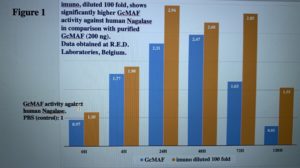“If you eat dark green, you WILL become lean!”
1) Kale
Possibly the most common of the bitter greens, kale is fairly mild in flavor, and it’s delicious both raw or cooked.
Just make sure to remove the fibrous stems before cooking!
Recipe: Slice kale leaves thinly and add to a bowl. Add a generous pour of extra virgin olive oil and a pinch of sea salt, and rub the salt/oil mixture into the leaves, massaging thoroughly. Finish the salad with a splash of lemon juice, red wine vinegar and, chopped avocado.
TIP: Greens grow in sandy soil, so be sure to double-rinse your greens in cool, flowing water to get that grit out.
2) Swiss Chard
Chard tastes like a cross between kale and cabbage. It can be eaten raw, but it’s best when cooked.
Eat the stems for extra fiber and crunch — they’re delicious!
Recipe: Thinly slice leaves and stems and set aside. Heat olive oil and garlic in a large saucepan. Cook until garlic is fragrant. Add chopped pecans and toast, then add chard and cook until wilted. Finish with a splash of balsamic vinegar.
Tip: If these greens are too bitter for you, make sure to add plenty of healthy fat, like extra virgin olive oil. It really cuts the bitterness… and tastes great!
3) Mustard Greens
This southern staple is curly leafed and has a peppery bite. Eat them cooked, and make sure to remove the stems first.
Recipe: Tear leaves into bite-sized pieces, removing stems. Add to a large pot with sliced onions, red wine vinegar, chicken stock, and sliced garlic. Cook covered for 1-2 hours over low heat until tender.
TIP: Another great way to add flavor and cut bitterness is with something acidic, like vinegar or even a squeeze of lemon juice!
4) Collard Greens
If you’ve ever spent time in the South, you’ve had collard greens… but you can actually eat them raw, and they’re a lot more nutritious this way.
Since the leaves are so broad, these relatively mild greens actually make great wraps — instead of tortillas. Just make sure to remove the tough stems if you’re eating them raw.
Recipe: Trim stem off leaves, and place in bowl of warm water with lemon juice. Let soak for 10 minutes, then dry and slice down the center stem to make leaves easy to wrap.
Fill with avocado, the protein of your choice, pickled onions, and a drizzle of lime juice, and wrap like a burrito.
TIP: Raw greens are delicious — and SO full of nutrients. Consider shredding greens like a salad, using them as a wrap, or subbing them into your favorite slaw.
So if you haven’t been a huge fan of bitter greens in the past, I strongly encourage you to try one of the four recipes above… even better, try all of them – you’re sure to find something you love.
Whatever you do, don’t skip your bitter greens! They’re just too important. And always remember my two favorite sayings:
“More bitter, more better.”


